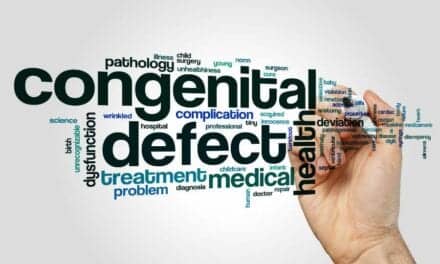Cleft lip and palate is one of the most common congenital malformations. Its causes are mainly genetic. However, it is still largely unknown exactly which genes are affected. A new international study led by the University of Bonn now provides new insights. The results are published in the journal Human Genetics and Genomics Advances.
The researchers from the Institute of Human Genetics at the University Hospital Bonn combined various data sources in their work. In the course of their research, they discovered five new regions in the human genome in which variations in the DNA sequence are associated with an increased risk of malformation.
A total of 45 such risk regions are now known. For some of them, the researchers were also able to show which genes are affected by these changes, a media release from University of Bonn explains.
“Our results provide new insights into the development of the disease, but also into the development of the face in the early embryo as a whole.”
— Dr. Kerstin Ludwig
Ludwig leads an Emmy Noether junior research group at the Institute of Human Genetics at the University Hospital Bonn, which focuses on the genetic causes of cleft lip and palate. The average contribution of genes to this frequent malformation is estimated at more than 90 percent.
“The genetic contribution is complex. That means there is not just one gene, but a whole set of genes that contribute to the malformation.”
— Dr. Kerstin Ludwig
Data from Previously Published Genomic Studies Combined
The blueprint of each individual human being is stored in his or her DNA, a kind of giant lexicon with around three billion letters. People are different, and the contents of their DNA lexicon differ accordingly. However, for people with a cleft lip and palate, at least the passages that have something to do with the disease should be similar. Science makes use of this basic assumption: By comparing the DNA of many thousands of affected individuals at several million sites, researchers can identify genetic regions that result in a higher risk of disease.
A whole series of such “genome-wide association studies” (GWAS) have been published in recent years, the release continues.
“We have now combined data from previously published GWAS. In this way we identified five risk regions that were previously unknown.”
— Dr. Julia Welzenbach
Welzenbach is a postdoctoral researcher in Ludwig’s group who led the study that has now been published. This makes it possible to find even those changes in DNA that only slightly increase the risk for the malformation and are therefore overlooked in individual studies.
However, this does not automatically contribute to a better understanding of the disease: Only about two percent of DNA actually contains genetic information in the sense of direct instructions for building proteins. Science is just beginning to understand what the remaining 98 percent is for.
“The 45 risk regions we know about today are all within that 98 percent, which we also call non-coding regions,” Welzenbach adds.
It is now known that part of the non-coding DNA serves to regulate the activity of genes. Some of these DNA regions ensure, for example, that a certain gene is read more frequently or in certain tissues. Such regulatory regions are therefore also called enhancers. Others, however, act as silencers – they switch off certain genes.
Mutations Affect Regulatory DNA Elements
In each cell, only certain genes are active at a given time of development. In other words, there is a cell type- and time-specific pattern of gene activity, and the silencers and enhancers are partly responsible for this.
“Some regulatory DNA sequences are now known to act as silencers or enhancers during early facial development of the embryo. We were able to show for some of the genetic changes from the GWAS data that they affect these regulatory sequences, and therefore also show which genes increase or decrease in activity as a result.”
— Dr. Kerstin Ludwig
Presumably, each of the 45 risk regions known today alters the effect of an enhancer or silencer. In this way, they disrupt the finely balanced activity pattern of genes that play a role in error-free facial development. And it is this disruption, combined with additional factors, that increase an individual’s risk to get a cleft lip and palate, per the release.
[Source(s): University of Bonn, EurekAlert]
Related Content:
Cleft Charity Partners Seek to Improve the Landscape for Pediatric Craniofacial Surgery Around the Globe
For Children with Cleft Lip and Palate, No Major Psychological Impact of Repeated Surgeries
Study Shines Light On Cleft Lip and Palate Genetic Factors




